#pepita tudó
Text
#el ministerio del tiempo#emdt#emdt polls#maría teresa de silva#maría josefa pimentel y téllez-girón#pepita tudó#maría francisca de sales portocarrero#maría isidra de guzman y de la cerda#simón bolívar#maría teresa del toro alayza#felipe iii de españa#margarita de austria#felipe iv de españa
2 notes
·
View notes
Text
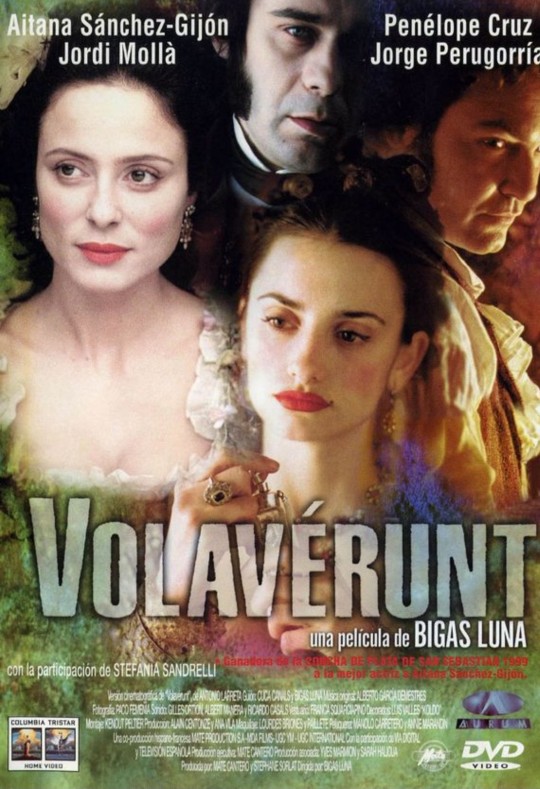


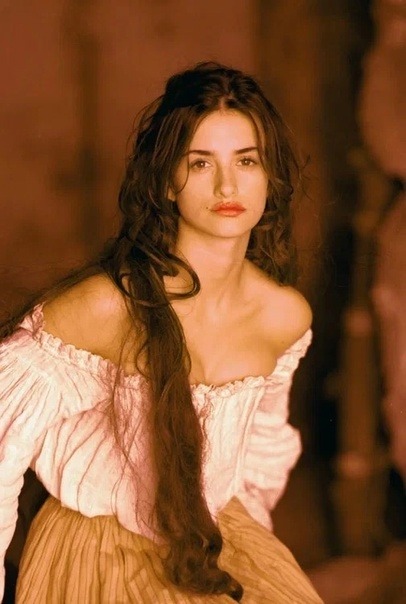



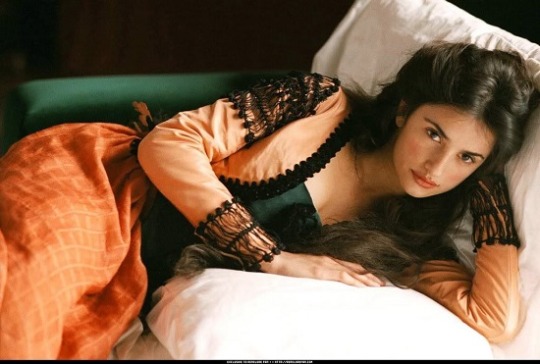
Penélope Cruz in Volavérunt (1999) director Bigas Luna
On July 23, 1802, the Duchess of Alba, the richest and most liberated woman of her time, offered a gala to inaugurate her new palace. The attendance is extraordinary: Prime Minister Manuel Godoy, the painter Goya and Pepita Tudó, Godoy's lover and Goya's model for his most famous painting The Naked Maja. The next morning, Duchess Alba appears dead in her bed under mysterious circumstances. He was 40 years old.
3 notes
·
View notes
Photo

The Clothed Maja (1800-1808). Francisco José de Goya y Lucientes (Spanish, 1746-1828). Oil on canvas. Prado.
An unidentified lady wearing delicate transparent clothing and a yellow jacket with black decorations lies on a green velvet divan with cushions and a spread. The sitter’s anonymity is maintained in all of the inventories listing this work. Legend would have it that she was the Duchess of Alba, although she has also been identified as Pepita Tudó, Godoy´s mistress from 1797 on.
30 notes
·
View notes
Text
2.1 Museo del Prado

Cheers to the start of week two of four in Madrid! Our weekend was full of Kapital clubbing, rooftop pooling and checking out all this wonderful city has to offer. A few friends and I made a stop at the local flea market called El Rastro on Sunday, finding loads of cheap bracelets and earrings among everything else you could imagine from clothes to pet supplies. Having spent some time walking around the city and engaging with the locals I can definitely say I feel far more comfortable here in Madrid than I do in Iowa City. Although Iowa City claims to be the LGBT-friendly city in Iowa, I can’t remember the last time I saw a same-sex couple holding hands whereas here I see it daily and don’t feel like I’m the only one. La Chueca— the Greenwich Village or gay district of Madrid— has become one of my favorite spots for wandering aimlessly. The neighborhood is full of rainbow flags and all-accepting bars, something I’ll undoubtedly miss when I’m back home where the only gay bar is the monochromatic Studio 13. Even the pedestrian crosswalk signals here aren’t only represented with a man, but also a woman, heterosexual couples and homosexual couples are used in addition to the male icon, a small gesture of inclusion that goes a long way.

On Monday our professor brought us to the infamous Museo del Prado which garners nearly 3 million visitors annually. Over 70,000 paintings are held in the museum’s vault and of that 70,000 there is only 1% of those works on display. Many of these paintings were made by Francisco Goya and Diego Velázquez whom I studied in Visual Culture Modern and Contemporary Spain, the class I took just last semester. Since the museum was founded in 1819 we made our visit at a pivotal time of renovation and restoration as the museum celebrates its 200th birthday, some paintings having been just restored the week before our arrival. Taking photos of the displayed artwork within the museum is strictly prohibited so to compensate I am providing supplementary images from, you guessed it, Google to show off just a couple of the many fine pieces of art the Prado museum houses.

Objectively, the most awe-striking painting the museum had to offer was one I had never even heard of before by Dutch painter Hieronimus Bosch called El jardín de las delicias, or The Garden of Earthly Delights. This was the first time I had ever seen a triptych painting, and no that’s not a play on words of the artwork’s psychedelic nature. A triptych painting is one that is made in a tri-fold and when closed, this painting’s façade depicts a flat-earth design; when opened, as shown above, it reveals three distinct images. To scratch the surface of explaining this masterpiece, the left side is a representation of the Garden of Eden, an uncorrupt and pure world where you can see Adam and Eve unclothed, still unaware of their nudity. Among them are fantastical creatures such as a unicorn drinking from the pond, a horned giraffe next to what appears to be a mix between a kangaroo and a dog, among other mystical creatures never seen before on Earth. In stark contrast, the right side depicts disturbing images of Hell and the consequences of our sin after having fallen from grace. We see images of a pig wearing a nun’s veil, a bird-human hybrid consuming bodies of the fallen and dumping them into a pit in which coins are being shat, just to highlight a couple. The painting in the middle is this in-between world that is not necessarily meant to represent Earth as we know it, but rather Earth as it could have been if Adam and Eve had never fallen from grace. With all this being said, the interpretations of this masterpiece are all theory as no one was able to ask Bosch what this painting is meant to represent, but it is known as a conversation piece where friends would gather and share among themselves what the work elicited in their mind. Although its meaning is debatable, it is widely agreed that Bosch had the help of some form of psychedelic, whether it be LSD or psilocybin mushrooms, it is hard to imagine someone coming up with this without the help of some mind-expanding substance. Since LSD is derived from ergot, a fungus that naturally grows on wheat, it could also be the case that Bosch didn’t even intend to trip, but just happened to buy bread from a careless baker that day, as this BBC article suggests. Nevertheless, it remains a mind-boggling piece of art that will forever fascinate me.
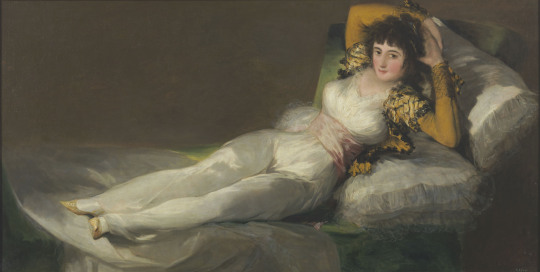
A piece that we studied in class last semester was La maja vestida, or The Dressed Maja, and is one of Goya’s most well-known pieces. I find the history behind this painting rather humorous because during Goya’s time the reality of this painting was unbeknownst to the masses, excluding Goya's close friends of course. Ultimately, the identity of la maja is unconfirmed but there are rumors ranging from the Duchess of Alba (who was, objectively, the most beautiful Spanish aristocrat) to Pepita Tudó (the mistress of Manuel Gudoy, the prime minister of Spain during Goya’s time). The woman’s identity is additionally concealed by the lack of a neck, which is often overlooked on first sight but unable to be unseen. The image above is not very controversial, which was exactly the point because it was used as a disguise to be placed over the image below.
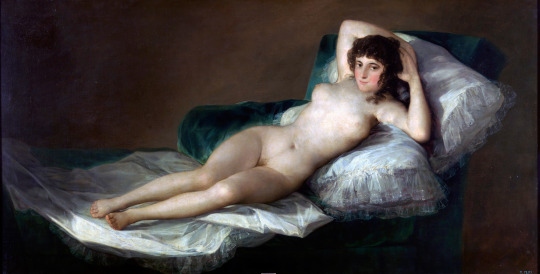
La maja desnuda, or The Naked Maja, was a highly controversial piece of art that Goya had hidden behind La maja vestida for good reason. At the time, the only nude women that were allowed be painted had to be goddesses from Greek myths because nudity portrayed by a mortal was simply considered pornographic by nature. Goya completely threw that idea out of the window with this work, but knew he would be prosecuted if he displayed this openly. In order to conceal the actual artwork, he painted La maja vestida and would only roll up the canvas to reveal the true painting when he was in private or with friends. An interesting piece of art with an equally interesting backstory!
It was a truly unique experience to see paintings in person that I had only ever seen from a projector in class. Everything from Goya’s Black Paintings to Velázquez’s infamous painting of Las Meninas, it was overwhelming to see these paintings in real life. I’ve never really been a fan of museums or art, but today definitely changed that. All the history behind these pieces and the mystery they hold will forever capture my attention. I can’t wait to see what else awaits me on this adventure!

2 notes
·
View notes
Photo

Portrait of Josefa (”Pepita”) Tudó
José de Madrazo
20 notes
·
View notes
Photo

Madrazo y Agudo, José de (Santander, 1781 - Madrid, 1859)
Manuel Godoy
Departamento: Museo
Nº Inventario: 1456
Datación: ca. 1816
Dimensiones: 132 x 116 cm
Inscripciones: "SENECA E SOCRAT.../ ERME/ TROVATO DA S.A.../ PRINCIPE DE LA .../ ILLVSTRATO E PRE.../ A.S.A./ DAL PROFESSOR .../ ROMA MDCCC...".
Técnica: óleo sobre tabla
Procedencia: Colección particular, Perugia
Observaciones: Nacido en una familia hidalga sin recursos, el joven Madrazo llega a Madrid como criado del conde de Villafuertes y en 1797 se matricula en las clases nocturnas de la Academia de San Fernando. A partir de 1799 continúa sus estudios gracias a una dotación del Real Consulado del Mar. En 1801, por disposición de Godoy, parte a París donde es admitido en el estudio del célebre Jacques-Louis David, a la vez que Carlos IV le concede una pensión anual de seis mil reales. A finales de 1803 se traslada a Roma, donde ejecuta lienzos destacados como La muerte de Viriato, fechado en 1807, pero a raíz de los sucesos acaecidos un año más tarde pierde la pensión, siendo encerrado con otros jóvenes pensionados en el Castel Sant' Angelo por negarse a prestar juramento a José Bonaparte. En Roma se casó con Isabel Kuntz, lo que le granjeó la protección de la numerosa colonia alemana. En 1813 retrató a los reyes exiliados Carlos IV y María Luisa, y en 1816 es Fernando VII quien le nombra su pintor de cámara. A su regreso a España fue votado académico de la Real de San Fernando, donde ocuparía los cargos de teniente director y director de pintura en 1823 y 1838 respectivamente.
Este retrato neoclásico presenta un aspecto inédito de Godoy (1767-1851), por entonces exiliado en Roma con Carlos IV y María Luisa. Atrás quedó su gran colección artística; compra la Villa Mattei y reúne nuevos cuadros y esculturas. Madrazo idealiza y rejuvenece su rostro, a pesar de las canas. Su imagen de gentilhombre coleccionista recibe un inesperado impulso al hallarse en la Villa Mattei un doble herma (que vemos sobre la mesa) con las efigies de Sócrates y Séneca. Godoy encarga a Lorenzo dal Re un estudio erudito de la escultura: es el folleto que tiene en la mano. En 1828 Stendhal menciona la Villa Mattei y el herma, no sin ironía hacia Godoy: "Ese estupendo Hermes [sic] ... con las cabezas y nombres de Sócrates y de Séneca. Tal descubrimiento ha librado a este hábil cortesano de la figura atroz y baja que todo el mundo le conoce".
El cuadro conserva su soberbio marco original tallado en madera y dorado, no en estuco como era lo habitual en la época, donde se despliega todo el repertorio ornamental neoclásico (contario, ova, dardo, hojas de acanto).
Este retrato tiene las mismas dimensiones que el de Pepita Tudó, también firmado por el artista (nº inv. 1481), por lo que es posible que ambos formaran pareja. El lienzo fue adquirido en 2004 a la Galería Whitfield de Londres.
Información de la Real Academia de Bellas Artes de San Fernando.
0 notes
Photo

la maja desnuda - FRANCISCO DE GOYA 1795-1800
An image of Venus in the nude, lying on a green velvet divan with pillows and a spread. Legend would have it that this was the Duchess of Alba, but the sitter has also been identified as Pepita Tudó, who became Godoy´s mistress in 1797
renowned for the straightforward and unashamed gaze of the model towards the viewer
among the earliest Western artwork to depict a nude woman's pubic hair without obvious negative connotations (such as in images of prostitutes)
similar to conventions of the nude in spanish art of the time while also breaking these standards - compare rokeby's venus
goya's subject is presented fully frontal, torso lit glowingly, breasts perky and invitingly open
her face is rosy and while her gaze is confronting, it is accompanied by a coy smile
lying on pure white sheets her image is portrayed as virginal, and propped up by large pillows she is presented as an object of desire
0 notes
Photo

El Ministerio del Tiempo, 03x04.
One thing is saving Goya’s Naked Maja from destruction. Another thing, though, is to preserve the famous painting while dealing with Young!Bolívar’s love life, Goya and the Duchess of Alba’s complicate relationship and Manuel Godoy (boos and hisses from the gallery) literally making little orphans cry. I really missed Velázquez, so I enjoyed every single moment with him in this episode. And Mr. Casablanc is always great, no matter the role he plays.
A little complaint (and the only one) is that costumes were overall not that great. I saw things that could be from the 1820s rather than 1799 (is Pepita Tudó a time traveler too?).
54 notes
·
View notes